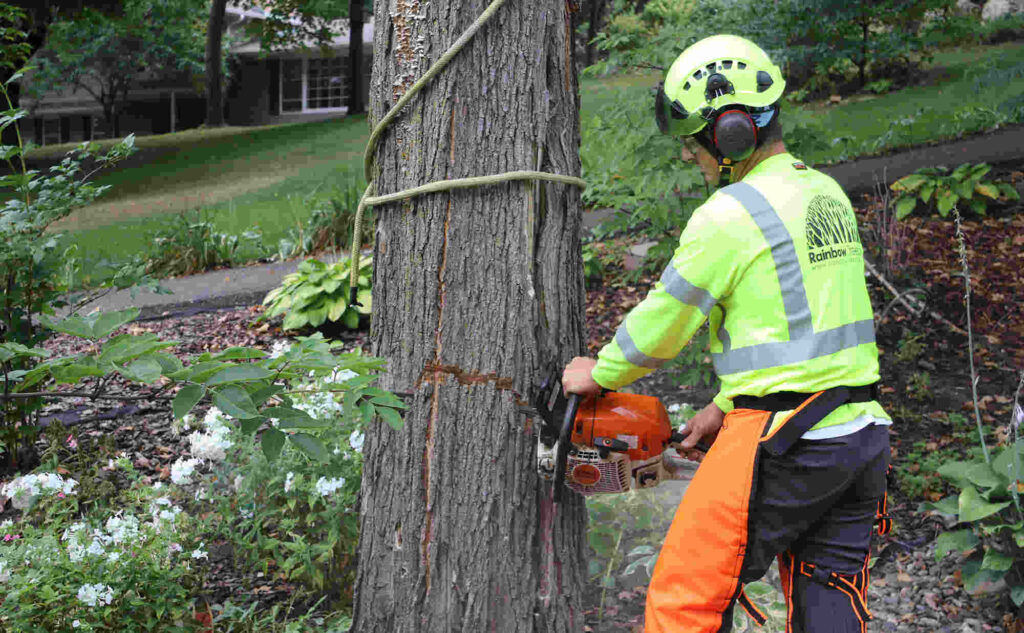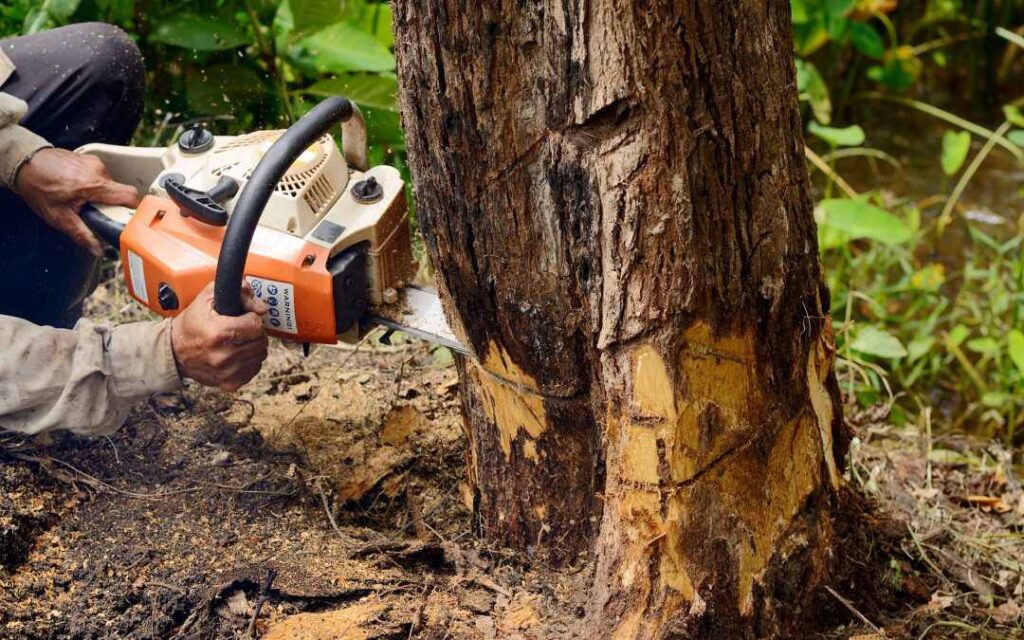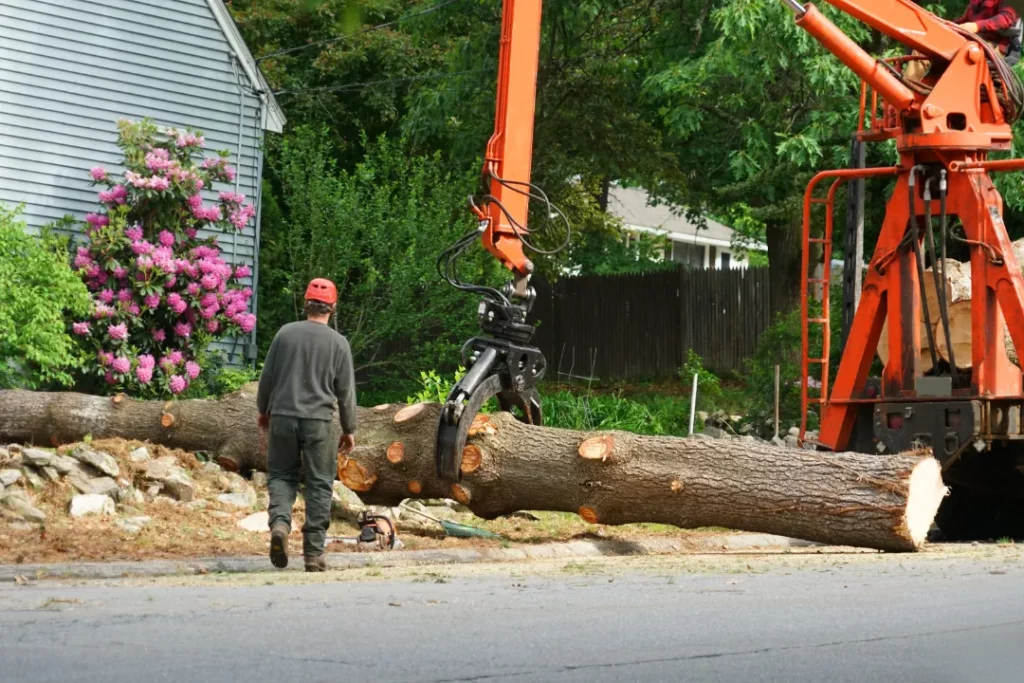Trees are a beautiful and essential part of our environment, providing shade, oxygen, and a habitat for wildlife. However, there are times when tree removal becomes necessary. Whether it’s due to a diseased or damaged tree, the need for additional space, or safety concerns, tree and stump removal services play a crucial role in maintaining the health and appearance of our landscapes.
Understanding Tree and Stump Removal
Tree removal involves cutting down a tree and removing it from the property, whereas stump removal refers to the complete extraction of a tree’s stump after its trunk has been cut down. Let’s delve into each process to gain a better understanding.
The Basics of Tree Removal
Tree removal is a detailed and precise process. It begins with a thorough assessment of the tree by a professional arborist. The arborist examines factors such as its health, structural integrity, location, and potential hazards. Based on the assessment, the arborist will determine the safest method for tree and stump removal.
Once the plan is in place, the actual cutting process begins. It involves strategic removal of limbs and branches, followed by the felling of the main trunk. Tree removal professionals use specialized equipment, such as chainsaws and cranes, to ensure a safe and efficient process. Care is taken to avoid damage to surrounding structures and landscapes.
During the tree removal process, it is important to consider the environmental impact. Trees play a crucial role in maintaining ecological balance by providing oxygen, shade, and habitat for various species. Therefore, arborists often work closely with environmental agencies to ensure that the removal of a tree is necessary and that appropriate measures are taken to mitigate the impact.
The Process of Stump Removal
After a tree has been cut down, the unsightly stump that remains can be an eyesore. Stump removal is performed to eliminate the stump entirely, restoring the aesthetic appeal to the area. There are several methods for stump removal, including grinding, excavation, and chemical treatments.
Stump grinding is one of the most common methods used by professionals. It involves the use of a powerful grinder to reduce the stump to wood chips. The depth of grinding depends on the client’s preference and the future plans for the area. Excavation, on the other hand, involves completely digging out the stump, including its roots. This method is often chosen when the stump is large or when the area needs to be repurposed for construction or landscaping projects.
Chemical treatments can also be used to speed up the decomposition process. These treatments involve the application of chemicals to the stump, which gradually break down the wood over time. While this method may take longer than grinding or excavation, it is a less invasive option and can be effective for smaller stumps or in areas where access is limited.
It is worth noting that stump removal is not always necessary. In some cases, the stump can be left in place and incorporated into the landscape design. It can be used as a natural seating area, a base for a decorative feature, or even as a platform for bird feeders. The decision to remove or keep the stump depends on the preferences of the property owner and the intended use of the space. You can visit https://sdgreatgardens.com/tree_removal_cost_calculator-estimate_your_expenses to get about tree removal cost calculator.
The Importance of Professional Tree and Stump Removal
While some property owners may consider tree and stump removal as a DIY project, hiring professionals for this task is highly recommended. Here are a few reasons why professional services are essential.
When it comes to the intricate task of tree and stump removal, the expertise and precision that professionals bring to the table cannot be overstated. Beyond just the physical labor involved, there are various factors to consider such as the impact on the surrounding landscape, underground utilities, and potential environmental implications. Professional arborists are well-versed in these complexities and can navigate them with finesse, ensuring a seamless and well-executed removal process.
Safety Considerations
Tree removal can be dangerous, especially when dealing with large and tall trees. Professionals are trained in proper techniques and have the necessary safety equipment to minimize risks. They are skilled in assessing potential hazards and taking precautions to ensure the safety of themselves and those around them.
Moreover, professional tree removal experts undergo rigorous training to handle various scenarios, including precarious tree positions, proximity to structures, and electrical wires. Their adeptness in risk assessment and mitigation not only safeguards the property and its occupants but also prevents any potential damage that could arise from an amateur attempt at tree removal.
Efficiency and Effectiveness
Professional tree and stump removal services bring expertise and efficiency to the process. They have the knowledge and experience to complete the job effectively and in a timely manner. Their specialized equipment allows for precise cuts and thorough removal, leaving the property clean and ready for future use.
Furthermore, the efficiency of professional tree removal services extends beyond just the physical labor. These experts also possess a deep understanding of tree biology and growth patterns, enabling them to strategize the removal process in a way that minimizes disruption to the surrounding ecosystem. By entrusting the removal of trees and stumps to professionals, property owners can rest assured that the job will be done not only swiftly but also with a keen eye on preserving the ecological balance of the area.

Factors Influencing the Cost of Tree and Stump Removal
Several factors influence the cost of tree and stump removal. Understanding these factors can help property owners prepare financially for the service.
Tree and stump removal is a crucial aspect of property maintenance that requires careful consideration of various factors. In addition to the size and location of the tree, other elements can contribute to the overall cost of the removal process.
Size and Location of the Tree
The size and location of the tree greatly impact the cost of removal. Larger trees typically require more labor, equipment, and time to remove. Accessibility to the tree also plays a role. Trees situated in challenging locations, such as near buildings or power lines, may require additional efforts and precautions.
Furthermore, the proximity of the tree to delicate structures or landscaping features can also influence the cost. Trees located close to fences, pools, or underground utilities may necessitate more intricate removal techniques to avoid causing damage, adding complexity to the overall process.
Condition of the Tree and Stump
The condition of the tree and stump can affect the cost as well. Diseased or damaged trees may require additional care in handling and disposal. Similarly, stubborn or well-established stumps might require more intensive removal techniques, impacting the overall cost.
Moreover, the type of tree species can also play a role in determining the removal cost. Certain tree species have extensive root systems or dense wood, making them more challenging to remove. Additionally, environmental factors such as weather conditions and soil composition can influence the ease or difficulty of tree and stump removal, potentially affecting the overall pricing of the service.
Preparing for Tree and Stump Removal
Before scheduling tree and stump removal, several essential preparations need to be made to ensure a smooth and efficient process.
Initial Assessment
Begin by scheduling an initial assessment with a professional arborist. They will inspect the tree, assess its condition, and discuss the best course of action. During this stage, you can also address any concerns or questions you may have regarding the removal process.
Arborists are trained professionals with expertise in tree care and maintenance. They can provide valuable insights into the health of your tree, identifying any signs of disease or decay that may impact the removal process. Additionally, they can offer recommendations on the most suitable methods for tree and stump removal based on the tree’s size, location, and surrounding environment.
Necessary Preparations
Once you have decided to proceed with tree and stump removal, make sure to clear the area around the tree. Remove any obstacles, such as furniture or vehicles, to create a safe and unobstructed working space for the crew. Inform your neighbors in advance to minimize inconvenience or disruption caused during the process.
Furthermore, consider the disposal of the tree and stump after removal. Some tree removal companies offer additional services for hauling away the debris or grinding the stump to prevent regrowth. Discuss these options with the arborist to determine the most suitable solution for your property.

Post-Removal Care and Maintenance
After the tree and stump are removed, there are a few essential steps to ensure proper care and maintenance of the area.
Tree removal is a significant task that can impact your landscape in various ways. Beyond just the physical removal of the tree and stump, there are additional considerations to keep in mind to ensure the long-term health and aesthetics of your property.
Cleaning Up After Removal
The removal of a tree and stump can generate a significant amount of debris and wood chips. It’s crucial to clean up the area thoroughly after the removal process is complete. Rake up any remaining wood chips, dispose of them properly, and restore the area to its original condition.
Proper disposal of tree debris is not only essential for the appearance of your property but also for its overall health. Leaving wood chips and debris can attract pests and insects, potentially causing damage to other plants in your garden.
Landscape Restoration Tips
If the tree removal has left an empty space in your landscape, consider options for landscape restoration. Consult with a professional landscaper to discuss suitable replacements, such as planting new trees or designing a garden that complements your space. Proper watering and regular maintenance will help the new vegetation thrive.
When planning for landscape restoration after tree removal, it’s essential to consider not just the aesthetic appeal but also the ecological impact. Choosing native plant species can help support local wildlife and create a more sustainable ecosystem in your yard.
So, whether you require tree or stump removal services, it is crucial to hire professionals who have the expertise, equipment, and knowledge to perform the job safely and effectively. With proper planning and post-removal care, you can keep your property safe, beautiful, and in harmony with the environment.

